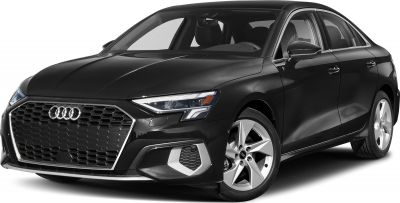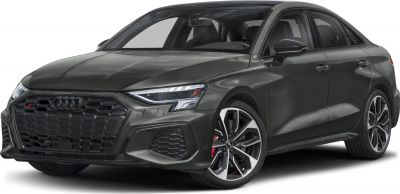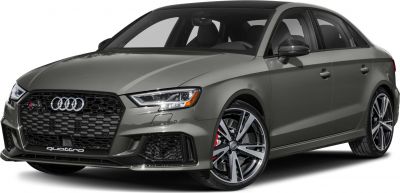 2005 BMW 3 Series Sedan (E90) Dimensions, Size & Specs
2005 BMW 3 Series Sedan (E90) Dimensions, Size & SpecsMeasurements of the 2005 BMW 3 Series Sedan, engineered for optimal performance and comfort
| Dimensions | |
|---|---|
| Length: | 4520-4526 mm178.0-178.2 in14.8-14.8 ft |
| Width: | 1820 mm71.7 in6.0 ft |
| Width (Opened Mirrors): | 2013 mm79.3 in6.6 ft |
| Height: | 1421 mm55.9 in4.7 ft |
| Ground Clearance: | 144 mm5.7 in0.5 ft |
| Trunk Capacity: | 450-460 liter15.9-16.2 cu ft |
| Trunk Capacity (Max): | 460-1385 liter16.2-48.9 cu ft |
| Weight Specifications | |
| Curb Weight: | 1325-1725 kg2921-3803 lbs |
| Maximal permitted Weight: | 1840-2170 kg4057-4784 lbs |
| Roof Load: | 75 kg165 lbs |
| Tire Specifications | |
| Rims Sizes: | 16-inch rims:
|
| Tire Sizes: |
|
The BMW 3 Series Sedan (E90), produced between 2005 and 2008, represents a key generation of BMW's popular compact executive sedan lineage. This generation combines sporty performance with refined design and practical dimensions suitable for daily driving and comfortable seating. The E90's length ranges from 4520 mm to 4526 mm (178 to 178.1 inches), offering a balanced footprint that is neither too large nor too compact for urban or highway use. The overall width varies between 1817 mm and 1820 mm (71.5 to 71.7 inches), expanding to 2013 mm (79.3 inches) when the mirrors are open, which is important for garage or parking space considerations. Height stands between 1418 mm and 1421 mm (55.8 to 56 inches), supporting a sleek profile with a ride height (ground clearance) of 144 mm (5.7 inches), providing a good balance of aerodynamics and road presence.
Regarding weight, the curb weight for the E90 spans from 1325 kg to 1725 kg (2,921 to 3,802 lbs), depending on engine configuration and trim levels, while the maximum permissible weight ranges from 1840 kg to 2170 kg (4,056 to 4,785 lbs). This variation allows for different performance setups and additional equipment. The luggage capacity is practical, with a trunk volume between 450 and 460 liters (15.9 to 16.2 cubic feet), expandable to 460 – 1385 liters (16.2 to 48.9 cubic feet) when rear seats are folded down, emphasizing versatility for carrying larger items or more luggage during trips.
The E90 is equipped with a variety of rim sizes ranging from 16 inches (16J x 16) to 18 inches (18.5J), matched with several tire options including 205/55 R16, 225/45 R17, and high-performance tire sizes like 255/35 R18, suitable for different driving styles and road conditions. The maximum roof load capacity is 75 kg (165 lbs), allowing for roof racks or carriers when needed. Overall, the BMW 3 Series Sedan E90 was designed as a driver-focused sedan with precise dimensions, agile handling, and a practical approach to passenger comfort and cargo space.
Discover the standout features that make the 2005 BMW 3 Series Sedan a leader in its class
Have a question? Please check our knowledgebase first.
The BMW 3 Series Sedan (E90) from the 2005-2008 production years measures approximately 4520 to 4526 mm (178 to 178.2 inches) in length. Its width ranges between 1817 and 1820 mm (71.5 to 71.7 inches), while the width with opened mirrors extends to 2013 mm (79.3 inches). The height is between 1418 and 1421 mm (55.8 to 56 inches). These dimensions make the E90 a compact executive sedan with proportions that favor sporty handling and a balanced stance.
The curb weight of the BMW E90 3 Series Sedan ranges from about 1325 kg (2,920 lbs) to 1725 kg (3,802 lbs), depending on the exact model, engine, trim level, and equipment installed. Lighter versions typically have smaller engines and fewer luxury features, while higher-performance or fully equipped trims weigh more due to added components like larger wheels, performance parts, or advanced technology packages. This range indicates a well-balanced weight for a sedan that emphasizes driving dynamics.
The BMW E90 offers a luggage capacity of about 450 to 460 liters (15.9 to 16.2 cubic feet) with the rear seats up, providing ample space for daily luggage and groceries. When the rear seats are folded down, the capacity significantly increases to between 460 and 1385 liters (16.2 to 48.9 cubic feet), allowing for much larger or longer items to be transported. This flexibility makes the E90 practical for weekend trips or larger cargo needs without compromising the sleek sedan profile.
Yes, the BMW E90 3 Series Sedan fits comfortably into a standard home garage. Typical garage dimensions are around 2400-2700 mm (94.5-106 inches) in width and roughly 2100-2300 mm (82.7-90.5 inches) in height. The E90’s width with mirrors folded is about 1817-1820 mm (71.5-71.7 inches), and its height ranges from 1418 to 1421 mm (55.8 to 56 inches), so it provides sufficient clearance for most standard garages, including space for opening doors and safe clearance.
The BMW E90 3 Series has a ground clearance of approximately 144 mm (5.7 inches), which is relatively low for a sedan and supports its sporty handling and great road-holding capabilities. This low ride height improves aerodynamic efficiency and lowers the vehicle's center of gravity, enhancing stability during cornering and spirited driving. However, drivers should be mindful of speed bumps and uneven terrain as the clearance is not very high, emphasizing the car’s focus on performance rather than off-road capability.
The BMW E90 3 Series Sedan supports various rim sizes, including 16, 17, and 18 inches. Specific options include 16Jx7, 17.8Jx7, and 18.8.5Jx8. Tire sizes correspond to these rims, with typical fits being 205/55 R16, 225/45 R17, 225/40 R18, and higher-performance options such as 255/35 R18 or 255/40 R17. These wheel and tire combinations affect ride comfort, handling precision, and aesthetics, allowing owners to tailor the car’s look and performance to their preferences.
Compared to its predecessor, the BMW E46, the E90 3 Series Sedan is generally slightly larger in all dimensions. The E90 measures approximately 4520-4526 mm in length versus the E46's roughly 4500 mm, and it is wider, measuring nearly 1817-1820 mm compared to the E46’s 1745 mm. Height remains similar, but the E90's increased width and slight length growth contribute to a more spacious cabin and updated styling. These incremental size increases improved interior space and helped the car maintain competitive dimensions in the compact executive segment.
The BMW E90 3 Series Sedan is dimensionally competitive with contemporaries such as the Audi A4 (B7) and the Mercedes-Benz C-Class (W204). The E90's length of around 4520 mm is close to the Audi A4’s 4525 mm and the Mercedes C-Class’s 4520 mm, making them similarly sized vehicles in the segment. The E90 is slightly wider than the Audi A4 but comparable to the C-Class. All three offer similar luggage capacities and interior space, but the E90 tends to focus more on sporty handling dynamics, with its size accommodating a balanced blend of comfort and performance.
The BMW E90 3 Series Sedan supports a maximum roof load of 75 kg (165 lbs). This capacity is adequate for standard roof-mounted equipment such as bike racks, ski racks, or reasonably sized cargo boxes. When loading the roof, it is important to distribute weight evenly and avoid exceeding this limit to preserve vehicle safety and roof integrity. The E90’s aerodynamic roofline also helps reduce drag and noise when carrying external loads, but heavier or bulkier items should be secured carefully.
The maximum weight or gross vehicle weight (GVW) of the BMW E90 varies from 1840 kg (4,056 lbs) to 2170 kg (4,784 lbs), depending on model configuration and equipment. This figure represents the total allowable weight of the vehicle, including passengers, cargo, and fuel. It ensures safety margins against overloading, helping maintain vehicle control and braking performance. Buyers should consult their specific model’s manual to understand exact GVW limits for optimal performance and safety.
Discover similar sized cars.

| Production: | 2024-present |
|---|---|
| Model Year: | 2025 |
| Length: | 4504 mm177.3 in |
| Width: | 1984 mm78.1 in |
| Height: | 1417-1433 mm55.8-56.4 in |

| Model Year: | 2021 |
|---|---|
| Length: | 4504 mm177.3 in |
| Width: | 1984 mm78.1 in |
| Height: | 1415 mm55.7 in |

| Model Year: | 2017 |
|---|---|
| Length: | 4479 mm176.3 in |
| Width: | 1960 mm77.2 in |
| Height: | 1397 mm55.0 in |
